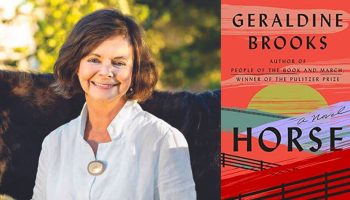
Zoe Kolenovsky
Staff writer
Two concerts from the School of Music this weekend offer audiences the opportunity to explore true musical intimacy, as students perform with one another through emotionally vibrant compositions.
At 2 p.m. on Saturday and Sunday, McKnight Hall will be filled with the sound of students working their way through masterworks of the classical genre without the guidance of a conductor as part of the School of Music’s continuing chamber concert series.
This year, “we made the decision to split the Chamber Concert series into two sessions,” said Kathryn Votapek, chair of chamber music for the School of Music.
The concerts taking place this weekend constitute the first session, which focuses on collaboration between the Instrumental and Piano Programs, with pieces selected to highlight “mostly strings with piano,” Votapek said.
The Instrumental Program includes 82 students; the Piano Program, 21. Each concert features a combination of students from both programs, offering them the opportunity to work with artists outside of their regular cohort. Saturday’s performance features 14 musicians in the Instrumental Program and three from the Piano Program, while the show on Sunday will be held with 14 instrumentalists and four pianists.
“It’s a great opportunity to get to know each other more,” said cellist Abby Hanna, who will be performing Sunday. “Because the whole Piano Program and department is so separated from the Instrumental (students), we don’t really work together unless it’s for a chamber concert.”
Violist Kate Reynolds said she has become “really close with my quintet” through the routine of rehearsing together in the past few weeks.
“This particular experience has been rewarding because we all get along really well. … You get to play with your friends,” she said.
The program for Saturday begins with a selection of movements from Russian composer Reinhold Glière’s Eight Pieces, Op. 39. These will be performed by Katharine Nelson on violin and Daniele Sesi on bass, making this the only duet of the first chamber concert session.
The Glière will be followed by Ernst von Dohnanyi’s Piano Quintet No. 2 in E Flat Minor, Op. 26. Laura Herrera and Valerie Xu-Friedman will play the violin arrangements, along with Reynolds on viola, Adrian Hsieh on cello and Andrew Chen on piano.
“It’s a really romantic and exciting piece of music,” Reynolds said.
Closing the concert is Antonin Dvorak’s Piano Quintet in A Major, Op. 81, a piece that alternates between slow, entrancing melodies and bursts of lively drama. The first two movements will be performed by Carlos Chacon and John Heo on violin, Diego Mieres on viola, Griffin Seuter on cello, and HaEun Yang on piano. Violinists Wendi Li and Hobart Shi, violist Mack Jones, cellist Ari Scott, and pianist Dongwon Shin will deliver the concluding scherzo and finale.
One of the benefits of the conductor-free style of the chamber concerts is the opportunity for close interaction between musicians in the moment.
“It’s much more intimate,” said Votapek, “both on stage and for the audience. Unlike the mass of forces you get with the full Music School Festival Orchestra, the chamber concerts are delivered by small groups of musicians, and the audience is much closer to the stage.”
Sunday’s performance will begin with two movements selected from Johannes Brahms’ Piano Quintet in F Minor, Op. 34. Completed in 1864 and published the following year, this piece from the German composer was originally conceived as a string quintet and later transformed into a sonata for two pianos before being finalized as a piano quintet. Violinists Emma Johnson and Caroline Cornell, violist Joia Findeis, cellist Anna Holmes and pianist Son Duong will be delivering this rendition.
To follow, cellist Hanna will be joined by violinist Nora Wang and pianist Sean Terada Yang in a presentation of Ludwig van Beethoven’s Piano Trio in D Major, Op. 70 No. 1, “Ghost.”
“In the context of Beethoven’s life, this piece would be considered part of his middle period,” Yang said, a period which is typically “characterized with restraint rather than the rage and passion of his later works. This work is unique among the middle period because you start to feel sharp emotions: eeriness, jubilation. And these aren’t built up gradually, but rather immediately flipped on and off.”
It is this eeriness which gives the piece its nickname “Ghost,” as both Yang and Hanna pointed out. The sensation is developed namely in the middle movement, which Hanna describes as “starting almost with silence” to build up a palpable haunting feeling.
Working in a trio, Yang said, “is special because it nicely balances the soloist characteristic of each performer while still retaining that collaborative aspect.”
The limited scale of this piece’s delivery does not come without challenges, though. “We also experience some hurdles in the sense of filling the sound with three instruments, in achieving the ebbs and flows of the piece with just three performers,” Yang said.
Robert Schumann’s Piano Quintet in E Flat Major, Op. 44 will serve as Sunday’s concluding piece, performed by two separate groups of students. First will be Amelia Posner-Hess and Evan Schuman on violin, Lily Jonsson on viola, Sofia Puccio on cello and Eric Yu on piano. Rounding out the program will be violinists Jameson Darcy and Rachel Lawton, violist Anna Stein, cellist Teo Dage and pianist Chelsea Ahn.
“You learn to have patience, you learn to bounce off others and to figure out what each person’s fortes are, what their strong suits are,” Hanna said of the experience.
“We each become our own equivalent of a conductor,” Yang said. “It’s less possible to achieve that intense level of intimacy with the authority figure of a conductor involved. … Such a performance necessitates a maturity that usually requires more than three weeks of study, but I think the intention with which we’ve been working has given us a healthy enough perspective to manage it.”




